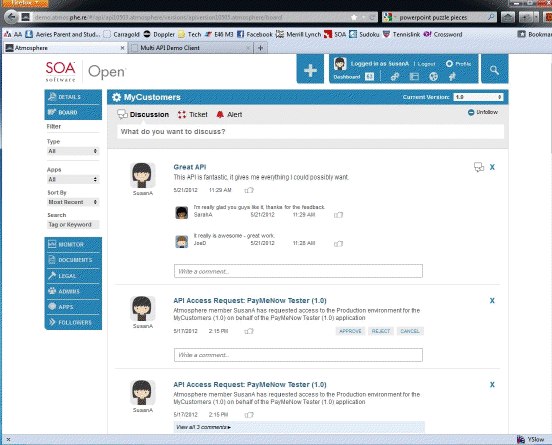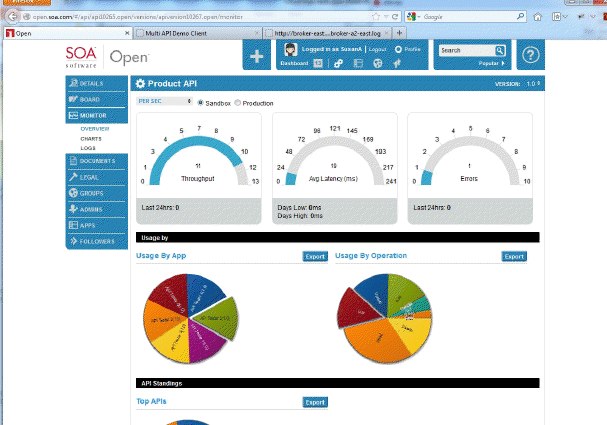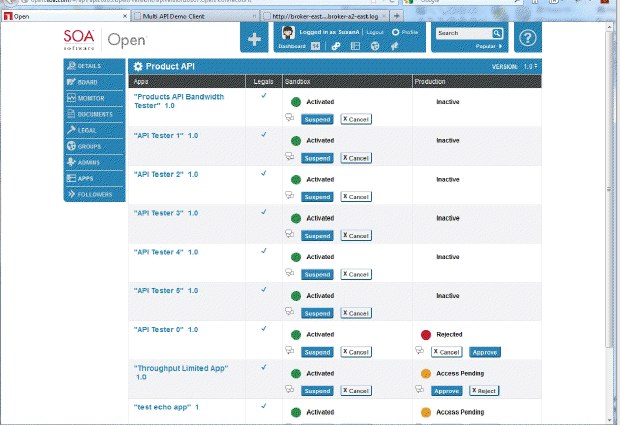SOA Software has a new management platform that company executives say better addresses the enterprise API market more so than the open API providers whose services have come into vogue in the past few years.
The proclamation is a shot across the bow of many an API provider — Apigee, Mashery and Layer 7 Technologies to name a few. According to SOA Vice President of Product Management Ian Goldsmith, Apigee and Mashery represent the “open API,” market that has mushroomed as more apps connect through RESTful APIs. He said their services are not suitable for enterprise APIs, as they don’t offer the end-to-end management that SOA offers. Layer 7, in Goldsmiths’s view, at its core is a run-time security platform that has pivoted to the API management market.
I find this characterization by Goldsmith a bit simple. All three of these providers have enjoyed phenomenal growth, as more companies develop apps and use APIs to connect with other apps and services. They all have legions of customers with no end in sight. Apps now come with APIs — it’s almost a prerequisite. Apigee, Mashery and Layer 7 are positioned to suit that market. I don’t want to get into the different attributes of each company in this post. I’ll get to that this weekend. But these are companies that give the customer access to all the modern apps that are defining innovation in today’s enterprise environment.
SOA is different. To me, it’s matter of fact if not a bit old school. It may not be sexy, but it gets the job done.
SOA fits the needs of enterprise architects and developers — people who have spent years building extensive infrastructures that can encompass hundreds of software stacks. How to access the data from these stacks is a challenge. Many were architected before APIs emerged as common ways to integrate applications. SOA, as expressed in the name itself, comes out of that age when the principles of “service-oriented architectures” were viewed as the most modern way to integrate multiple on-premise applications into a web environment.
At its heart, SOA Software provides developer tools that are generally well-regarded. The new platform solves common challenges. But does the management get the Web API movement? I am not so sure. They say they do but there is hardly the mention of a mobile strategy or any of the discussion that comes when building out a web-focused app ecosystem.
That’s not to say that the SOA enterprise API platform lacks merit. It is generally well-regarded. The dashboard has the style we see in modern app management.
The new platform has an API management console that provides a view of all apps and APIs. Goldsmith said a single user has a dashboard that can create simulations for how a single app connects to different APIs in their console.
When an API comes into a proxy server, SOA adds a header to the inbound call. It is parsed through the various apps responding to the API request. SOA then processes the transaction as it follows its path through the system.
SOA has also included an activity stream to collaborate on application development. One observer said it was similar to Google Circles.

SOA governance is SOA’s sweet spot. To say it provides what Apigee or Mashery offer seems a bit of a stretch. More so, SOA shows the wide market for API services that are integrating deeper into enterprise environments.
The need for API management stretches from consumer apps to deep in the enterprise. SOA is a company trying to help customers who manage large on-premise shops with developers who need master views of their API integrations. There’s a need for that kind of service but how much growth there is for that market makes me wonder. Consumer and enterprise technologies are converging. As they do, the majority of new apps will come from Internet and mobile-savvy developers that use APIs to connect distributed environments more so than back-end systems.


